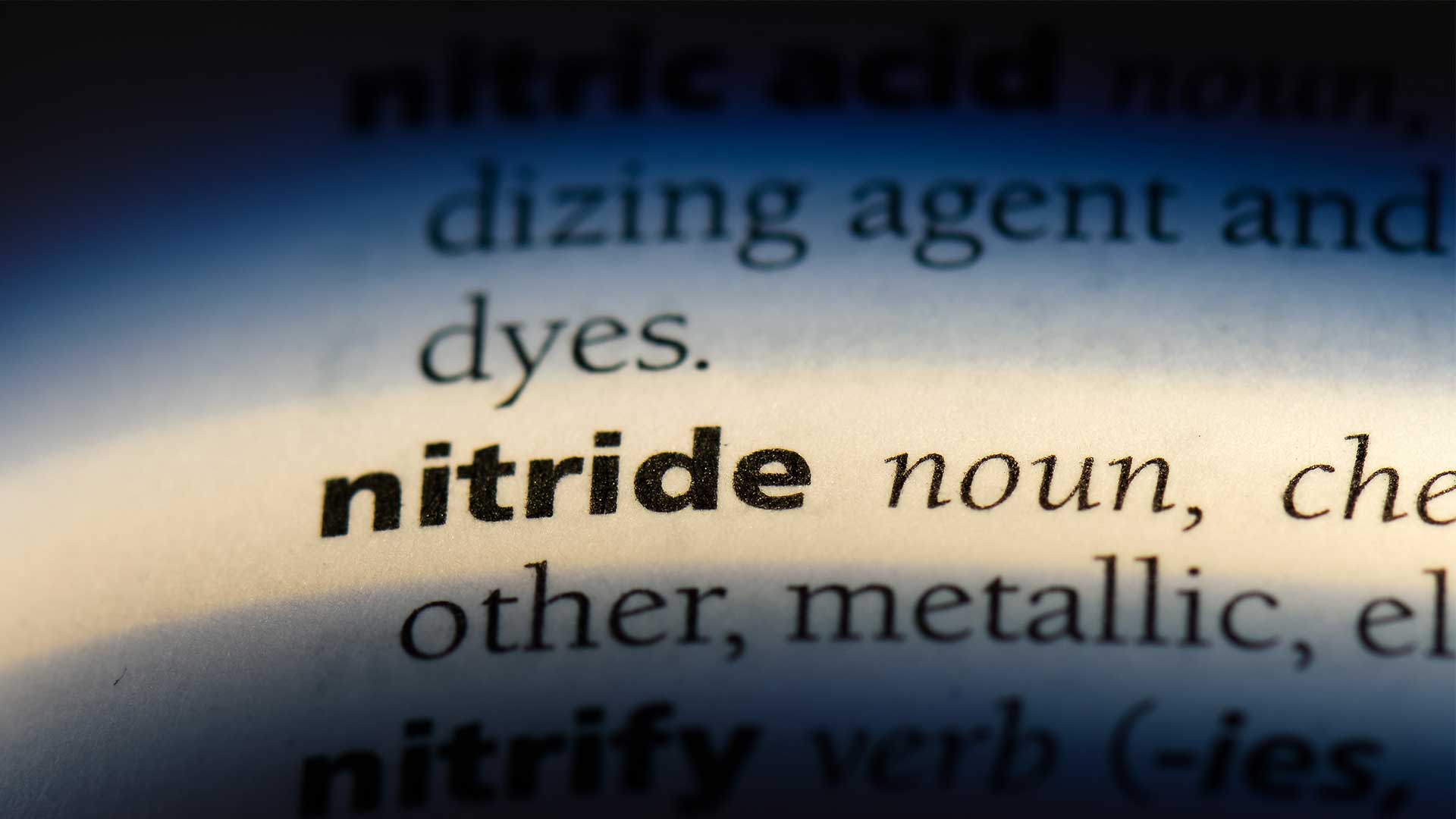Nitride: An Essential Material for Electronics
A nitride is a nitrogen compound that combines with an element with a lower or similar electronegativity to nitrogen, including boron, magnesium, silicon, and most metals. Nitrides carry the nitride ion (N3−), forming a huge group of compounds with various properties and applications.
Types of Nitrides
Nitrides are classified into three types ionic, interstitial, and covalent.
Ionic Nitrides
Ionic nitrides are produced when nitrogen reacts with alkali, alkaline earth metals, and group 3 metals. However, lithium is merely an alkali metal producing M3N. All alkaline-earth metals combine to form nitrides with the formula M3N2.
When these complexes (comprising metal cations and N3- ions) perform hydrolysis, they form ammonia and a metal hydroxide. Ionic nitrides also have varied stability; for example, Mg3N2 breaks down at temperatures above 270°C, while Be3N2 disperses at 2,200 °C.
Lithium Nitride
Lithium nitride (Li3N) is a reddish-pink, high-melting solid that readily decomposes in water to produce a corrosive solution of lithium hydroxide and ammonia. It is used to store hydrogen as an electron injection substance in organic light-emitting diodes and manufacturing lithium-ion batteries.
Li3N has excellent solid electrolyte characteristics, allowing it to combine with SiS2 to create high room-temperature conductivity.
Magnesium Nitride
Magnesium nitride (Mg3N2) is a powerful chemical compound with numerous applications. It is produced through a chemical reduction process combining magnesium oxide and nitrogen gas at high temperatures.
The resulting Mg3N2 powder can then be used to make a variety of other nitrides with characteristics such as high hardness, higher thermal conductivity, wear resistance, corrosion resistance, and high-temperature resistance. It can be used to make special ceramic materials and alloy-blowing agents.
One of the most popular uses for Mg3N2 is the creation of hard steels, strong alloys, and high-strength ceramic materials. It can also be used to create synthetic diamond and cubic boron nitrides and high-strength steel smelters.
Covalent Nitrides
Covalent nitrides are compounds in which nitrogen is bonded to one or more elements from groups 13-15 of the periodic table. These compounds are extremely hard, and the majority of them are nonconductors. Covalent nitrides have a wide range of properties depending on the element toward which nitrogen is covalently bound. For example, BN is a very hard material used in abrasives and cutting tools, (CN)2 is a colorless and harmful gas, and Si3N4 is used as an engine part material in automobiles.
Boron Nitride
Boron nitride is a white solid material composed of boron and nitrogen atoms in a one-to-one ratio. It takes the form of a hexagonal crystal lattice similar to that of graphite and is sometimes referred to as white graphite or hexagonal graphite.
While BN occurs naturally in the form of a hexagonal crystal lattice, it can also be produced synthetically. Due to its appearance and properties, synthetic BN or cubic boron nitride (c-BN) is often referred to as synthetic diamond.
Wurtzite boron nitride (w-BN) is a crystalline material composed of boron and nitrogen atoms arranged in 6-membered rings in a wurtzite structure. It is a boron nitride’s allotrope, similar to hexagonal BN (h-BN). However, the two materials have different properties due to their different crystal structures.
BN has unique properties that make it useful in various applications. For example, it is an excellent electrical insulator, meaning it does not conduct electricity. This property makes it useful for semiconductor manufacturing and other electronic applications. BN also has a very low coefficient of thermal expansion, meaning it expands very little when heated. This makes it ideal for high-temperature applications such as furnace linings and heat-resistant coatings.
BN is also chemically resistant and has a high melting point, making it useful for various industrial applications. In addition, it can be used to make extremely hard and durable materials such as cutting tools and abrasives.
Cyanogen
Cyanogen is a colorless, highly flammable gas with an almond-like smell. It is produced by oxidizing hydrogen cyanide (HCN), which requires many different oxidizing agents, such as oxygen (O2), chlorine (Cl2), and nitrogen dioxide (NO2). The cyanogen molecules have a linear structure.
Cyanogen is extremely toxic, and prolonged exposure can have serious health consequences.
Silicon Nitride
Silicon nitride (Si3N4) is a chemical compound made of silicon and nitrogen. It is one of the hardest and strongest materials, making it an ideal choice for many industrial and engineering applications. This material can withstand high temperatures and has excellent wear resistance, making it perfect for car engines, aerospace components, and medical implants, among other things. Because of its resistance to high-energy particles, Si3N4 is also used in semiconductor manufacturing.
This versatile material has many different applications due to its unique properties. It is important to note that SI3N4 is not a metal but a ceramic. It is an insulator, which is why it is often used in electrical applications, i.e., from light bulbs to TVs to cell phones.
Interstitial Nitrides
Interstitial nitrides are transition metal-induced nitrides. They are the same as interstitial carbides in that nitrogen atoms take up the interstices, or gaps, in the close-packed metal lattice. Although their stoichiometries differ, the general formulas of such nitrides are MN, M2N, and M4N.
These nitrides are extremely hard, chemically inert, have extremely high melting points, and are opaque with metallic luster and high conductivities.
Applications of Nitrides
Nitrides are a versatile class of materials with a wide range of applications in the industry due to their unique properties. With their high melting point and wear resistance, nitrides are often used as refractory materials.
This is due to the nitride ion’s attraction to metal cations, which results in a strong bond. As a result, TiN, c-BN, and Si3N4 are frequently used in hard coatings and cutting tools. A layered h-BN, similar to molybdenum disulfide, is a high-temperature lubricant.
Nitrides also have large band gaps, making them excellent insulators or wide-bandgap semiconductors. BN and Si3N4 are two examples of such nitrides. GaN is a critical wide-bandgap material valued as a blue light emitter in LEDs.






